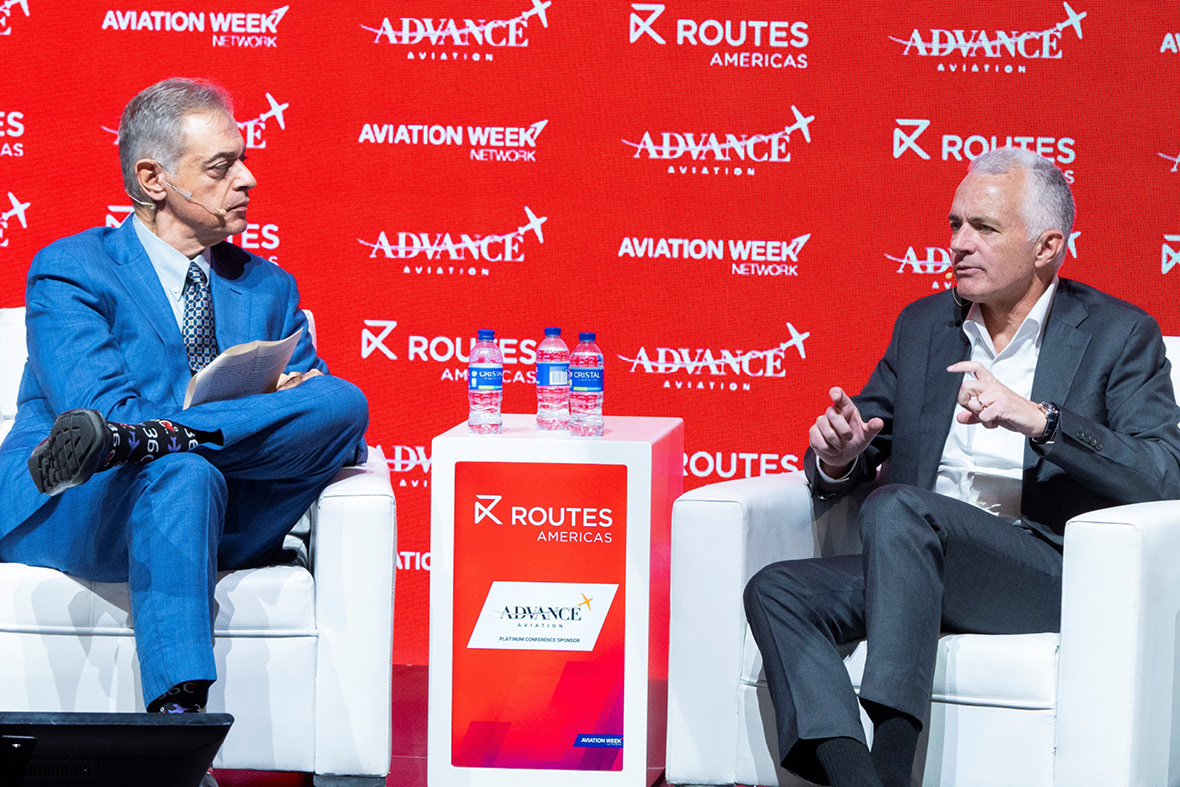Sun Country Airlines has carved out a profitable niche from its Minneapolis base, and intends to look further afield
Sun Country, the north-south carrier that has launched most of its flights from Minneapolis-St Paul since 1982, is developing plans for a new similarly sized base.
Dave Davis, Sun Country President for five years, said at Routes Americas in Bogotá that the airline is on track to grow its fleet to 75 Boeing 737 aircraft. “The next iteration of the company is probably building out a new focus city similar to Minneapolis,” he said.
At present, the airline’s longest flight is Minneapolis-Aruba, typical of its leisure-focused route structure. The company has three businesses: scheduled service, charters and cargo. The former makes up two-thirds of its revenue, Davis said.
Private equity took over the airline in 2017 after years of struggle, and it changed strategy. “There was no space for a third ULCC [ultra low-cost carrier]” in the US airline market, Davis said, so the restructured Sun Country became a scheduled-charter hybrid, adding an Amazon cargo contract later.
Davis admits that Sun Country’s structure is “complicated to explain”. The airline can operate scheduled and charter flights with the same aircraft on the same day, for instance.
Flexible schedule
Unlike other low-cost airlines, Sun Country serves mostly large cities, though it parachutes in and out of cities depending on leisure needs.
“We open and close up to 100 stations a year,” he said. “For example, in the Caribbean we may fly three months to a city and close the station the rest of the year.”
Post-pandemic, the airline cut costs by sourcing all 737 aircraft on the open market.
“It began as an experiment,” Davis said. “We have no orderbook at all. We now either own the aircraft or will run it down until there’s no life left. We don’t do expensive engine overhauls.”
Sun Country moves a portion of its fleet to Dallas for the summer months, flying to beach destinations against other, larger airlines. “We have very few markets where we’re the only carrier in the market,” he said.
“We fly a lot to Central America, so Northern South America is probably something we’ll look at,” said Davis, adding: “Future growth may not be in scheduled service.”
The airline already operates a lot of charters for collegiate sports teams, US soccer teams and the US military.
“September is low for scheduled service but high for college football,” Davis noted. “We will fly to Las Vegas on Thursday, use the aircraft for ad-hoc West Coast charters, then back to Vegas on Sunday.”
Sun Country operates 63 737s for passengers and cargo and is always on the hunt for more, even if the best option is to be uniquely creative. The airline has acquired leases on seven 737s that are still flying for another airline. “We acquired seven aircraft by stepping into leases. We collect the lease payments and then they’ll transition into our fleet during 2025-2026,” he said.
Sun Country has quietly grown to a profitable US$1 billion airline with the highest pre-tax profit, 9.9%, of any US airline. The airline will begin Minneapolis to Monterey, California; Austin, Texas; and Manchester, New Hampshire later this year. It operates 122 routes to 108 airports.



